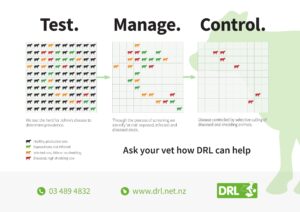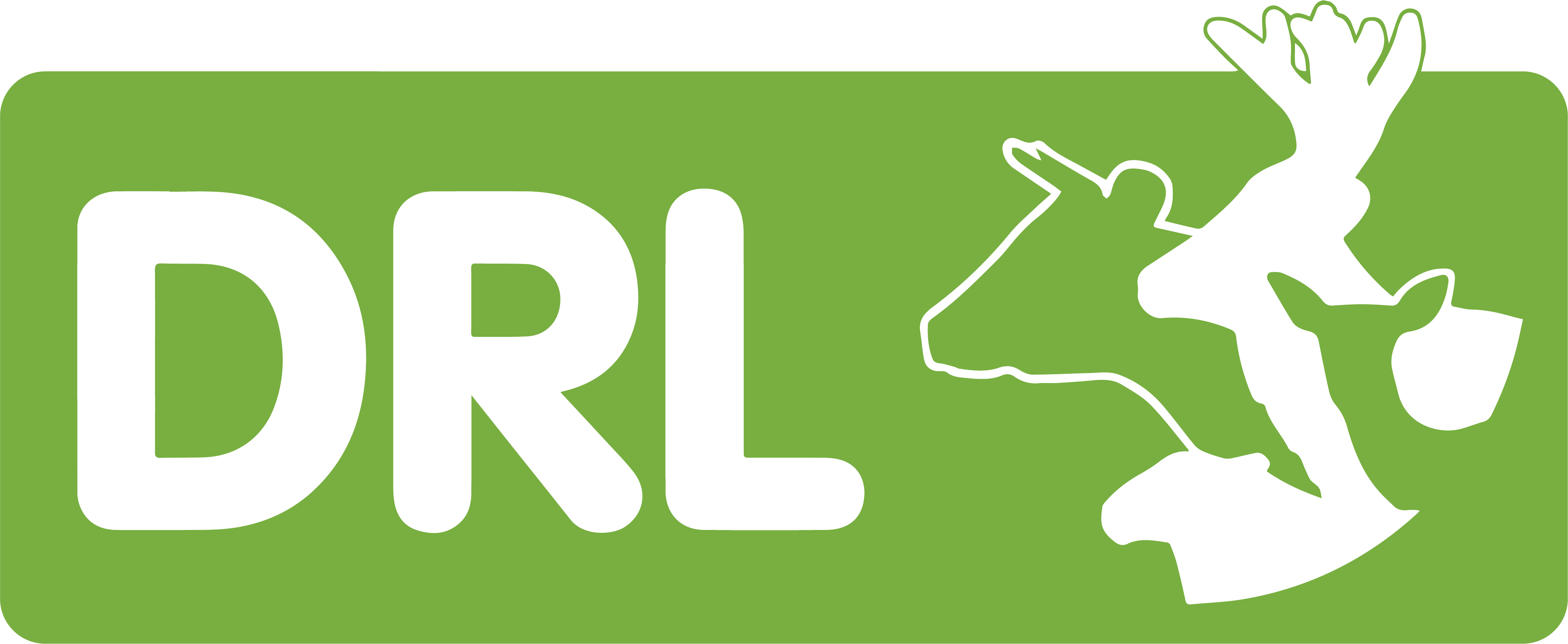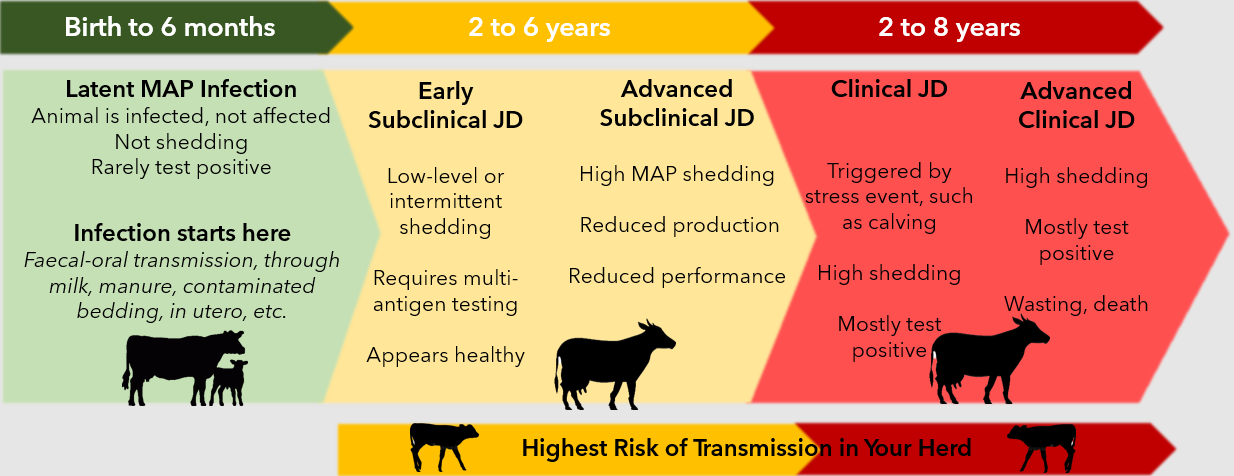Johne’s Disease Progression in Cattle
Managing Johne’s Starts with Testing
 Estimates suggest that as many as 60% of NZ dairy herds may now harbour some MAP infection, with 10% of herds experiencing clinical disease on farm. Similarly, 60% of deer herds, 31% of beef herds and 68% of sheep flocks are estimated to be exposed to MAP infection although within herd incidence of clinical disease is much lower (source: Johne’s Disease Research Consortium June 2016).
Estimates suggest that as many as 60% of NZ dairy herds may now harbour some MAP infection, with 10% of herds experiencing clinical disease on farm. Similarly, 60% of deer herds, 31% of beef herds and 68% of sheep flocks are estimated to be exposed to MAP infection although within herd incidence of clinical disease is much lower (source: Johne’s Disease Research Consortium June 2016).
Best practice guidelines released by DairyNZ have recommended that herd owners both know the status of their herd by using tests to identify positive cows and remove these from the herd by culling. The importance of prompt identification and removal of shedding livestock is both recognised and endorsed by DairyNZ, the Johne’s Disease Research Consortium and Johne’s Management Ltd as the single most significant and immediate step towards reducing JD impact on affected farms and limiting spread of further infection.
The single greatest source of infectious MAP bacteria is an actively shedding, Johne’s disease affected animal. The progression from mild, subclinical infection to overt disease often follows some form of physiological stressor such as calving, lactation or weaning.
Cattle Testing Options
The Paralisa™ Test Advantage
Transmission of the MAP bacterium
Transmission is usually faecal-oral with juveniles ingesting the bacteria through faecal contamination of teats, water or surfaces or grazing on contaminated pasture. The feeding of colostrum from infected mothers is also considered a significant risk factor for MAP transmission to young animals.
As disease progresses and MAP bacteria proliferate in the intestinal tissues, affected animals begin to shed more and more MAP bacteria in their dung into the environment where the bacteria can survive for up to 18 months due to their tough, lipid-rich cell wall.
“Johne’s is a terrible disease to have in your deer herd but can be dramatically reduced through blood testing. My herd was possibly at the lower end of infection but enough to warrant the expense of testing. After 4 years of testing 18 month hinds, the final test resulted in a near enough clear test so I have stopped but will re-test in a couple of years to make sure there is no reinfection. My dealings with DRL has been professional and educational. Simon is able to explain in ‘farmer talk’ what the tests have shown. The cost of course is a factor but the value of my herd and the increase of production from healthy animals far outweighs the cost.”
Lachlan McDonald
Farmer, Owaka, South Otago

